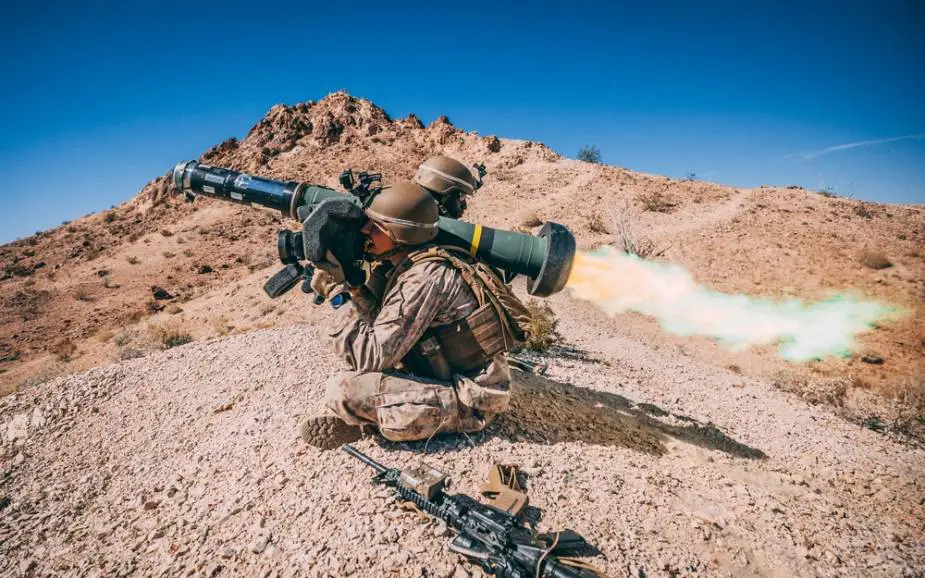The Javelin Joint Venture (JJV), a collaboration between Raytheon Technologies and Lockheed Martin, has secured a $7.2 billion indefinite-delivery, indefinite-quantity (IDIQ) production contract from the U.S. Army for the Javelin anti-tank missile weapon system. The contract spans fiscal years 2023 to 2026 and includes the procurement of Javelin systems, associated equipment, and services for both the U.S. Army and international customers.
Follow Army Recognition on Google News at this link

U.S. Marine Lance Cpl. Justin Bunde, anti-tank missile gunner, 2nd Battalion, 8th Marine Regiment, 2nd Marine Division, launches a Javelin shoulder-fired anti-tank missile. (Picture source U.S. DoD)
The initial authorized funding of $1.02 billion will enable the production of Javelin All Up Round (AUR) to increase to 3,960 per year by late 2026. The contract also covers tooling, test equipment, and non-recurring effort (NRE) required to expand Javelin production capacity at JJV factories and throughout the supply chain.
JJV representatives highlighted the importance of the Javelin anti-tank missile weapon system in meeting the evolving needs of customers around the world, as well as the contract's role in addressing increasing international interest in the multi-purpose weapon system. North Macedonia is among the more than 20 international customers and is a new addition to the list of Javelin users.
Produced by the JJV at Raytheon Technologies' facility in Tucson, Arizona, and Lockheed Martin's facility in Orlando, Florida, the Javelin missile is a battle-proven, fire-and-forget precision anti-armor weapon. Over 50,000 missiles and 12,000 reusable Command Launch Units have been produced to date. The Javelin is expected to remain a key component of the U.S. weapon arsenal until 2050.
The Javelin shoulder-fired anti-tank missile is a portable, fire-and-forget weapon system designed for infantry use against armored vehicles, bunkers, and fortifications. Developed and produced by the Javelin Joint Venture (JJV), a collaboration between Raytheon Technologies and Lockheed Martin, the system is comprised of a missile encased in a disposable launch tube and a reusable Command Launch Unit (CLU) for targeting and guidance.
The Javelin missile employs a tandem warhead, which is effective against reactive armor commonly used on modern tanks. It has a range of approximately 2.5 miles (4 km) and uses an infrared seeker for guidance, making it a fire-and-forget system that allows the operator to move or seek cover immediately after firing. The missile can be launched in two different modes: top-attack mode, where the missile flies above and strikes the target from above, exploiting the weaker armor on the top of tanks, and direct-attack mode for engaging non-armored targets or targets behind cover.
The Javelin has been battle-proven in various conflicts, including Iraq, Afghanistan and now Ukraine, and has been widely adopted by the U.S. Army, U.S. Marine Corps, and more than 20 international customers. It is expected to remain a crucial part of the U.S. weapon arsenal until 2050.















